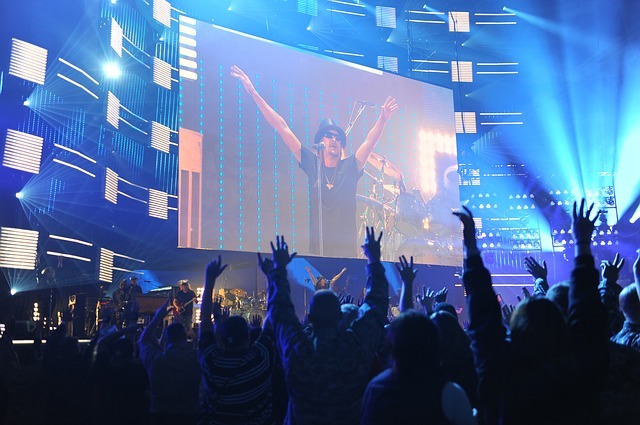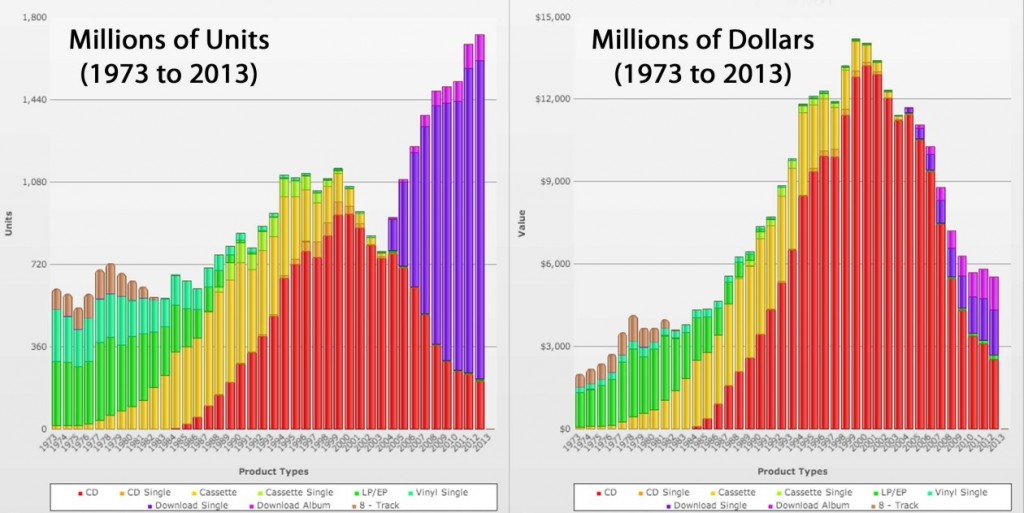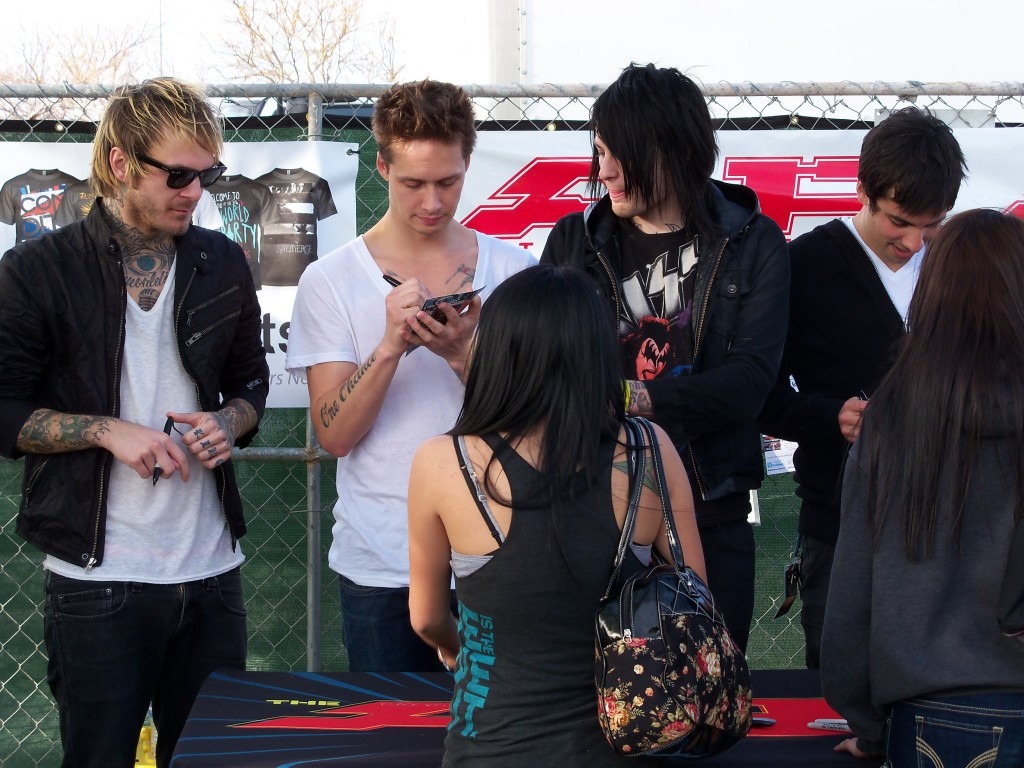Perhaps one of the lessons about how the Internet disrupts everything is that legacy brands have to find different ways to feed the beast, to make their numbers, to evolve to these modern media and entertainment demands.
As we discussed last week in this space in a few different posts, radio’s bread and butter – selling 30 and 60-second commercials – is a model that is being severely challenged. Radio always had issues with “scale” in that there is simply a limit to how many commercials you can sell in an hour – although many stations and companies have clearly crossed that line.
But no matter the degree of greed, there are only so many minutes in an hour, and that’s where rate integrity and inventory control always struck me as a skill that feel somewhere between genius and voodoo.
Over time, spots sales continue to be problematic, while digital and that “other” category (events, so-called non-traditional revenue”) becomes more important.
And it started to remind me about what’s been happening in the music industry for the last several years. In the world of albums, the money kept rolling in as consumers enjoyed collecting music. And when CDs came along, the model sustained itself – and those little discs jewel cases actually took up a lot less room.
But Napster and then iTunes began to change that. In the age of the mp3 player, you could buy music by the song for a lot less money (or steal it), it took up no space and you still owned it. For the artists themselves, their world started to unravel because their dollars started turning into dimes.
Today, however, that would be a great scenario. Most people don’t want to own albums or songs (except die-hard collectors) much less physical CDs. In fact, there’s no reason to buy music in even file-form when you can just use cloud-based services, make your playlists up the way you like, or let an algorithm do the heavy lifting for you.
And so for every artist, music sales aren’t what they used to be – even for the megawatt stars. So that means that smart musicians in every music genre have had to improvise, pivot, experiment, and innovate in order to stay relevant, sustainable, and in the black.
To gain a better appreciation of the game-changing dilemma that artists and bands face, these two charts covering a 40-year span tell a grizzly story. Put together by The Current in Minneapolis last year, they lay out the ultimate cautionary tale for radio. Because when it comes to facing the reality of your business model, these side by side charts depict an industry that has turned upside down. The red bars are CD sales, and the purple bars are song and album downloads. Even as the latter grows, the money simply isn’t there to support the backbone of the music industry – its talent. These days, they are forced to find alternative ways to sustain and grow.
If you think about it, radio’s in a nearby boat. As spot revenue becomes more problematic, radio stations and clusters are compelled to look at other ways to leverage brand strength to bring in cash. But the burning question is whether radio can learn something from the bands it plays.
Think about the ways that artists now generate income and fans, and how they might apply to radio operations.
• They tour. And they tour and they tour. Whether you’re 70-year old Bob Seger (as of Wednesday) or a couple of twentysomething guys in a band called Milky Chance, you’re on the road, building a fan base, and honing your craft.
In radio, making appearances – especially on the local level – has never been more important. It’s the pathway to staying relevant, visible, and top-of-mind.
• They sell merch. For musicians, the sale of T-shirts, hats, and anything else with their logos on it has been a key factor in building revenue. Fans love memorabilia, they’ll spend gobs of money on it, and then they’ll proudly display a band’s logo for years and years – often until the article of clothing has worn out.
Radio should be taking notes, because most stations abandoned their merch strategies in the early ‘90s, just when Nike and others were making branded merchandise desirable . To say that radio has missed the revenue boat on merch is an understatement.
• They do endorsements. In most cases, this amounts to licensing their commercials to advertisers. There’s a lot of money here, and it exposes all kinds of people to their music – all paid for by the sponsor brand. I saw a tweet the other day where someone observed having sat through a commercial break on TV and one of the products didn’t use a Who song. From Cadillac’s memorable use of Led Zeppelin’s “Rock N’ Roll” to Walmart using AC/DC’s “Back In Black” to market a Black Friday sale, there’s a lot of money and other value here.
>Email recipients: Click here to watch Walmart video<
Sponsors will pay radio to lend their name and personalities to their product. They’re called “live reads,” but they have been overused and undervalued over the years. Back when he was the morning king of Detroit radio, Jim Harper helped create a smart program of “platinum sponsors” where he worked hard to select them and make them essential. These programs aren’t easy to run, but they are immensely profitable, and they provide true value to advertisers.
• They create experiences. You want Fleetwood Mac to play your daughter’s Bat Mitzvah, Billy Idol to appear at your retirement party, or Billy Joel to appear at your corporate meeting – it can be done. For most consumers, it’s about access which is why they’ll pay more for special treatment, proximity, and perks.
Radio has some of the same potential to cash in on providing fan experiences – whether it’s going to a concert with a favorite jock, attending a baseball game with a sports radio host, or even sitting in on a music meeting. While radio often does a good job of letting clients leverage its brands, it often falls short on the ability to benefit from its own celebrity and access. In the same way that a simple band meet-and-greet can create a memory that will last a lifetime, many stations have that same potential to make an impression and even get paid for the privilege of doing it.
• They build fan clubs. Email marketing and fan websites have been bread and butter to bands for some time now. I had the pleasure of sitting in a conference room with Irving Azoff a number of years ago as he laid out all the reasons why the Eagles no longer needed a record label, and how they could support their tours by tapping into their fan base. The band had amassed a huge, well-maintained database that could be mobilized to sell concert tickets, merch, and just about anything they dreamed up. Today, smart artists and bands have figured out the database marketing piece, and they wisely use it to build and manage their fan empires. These are profitable workarounds that provide artists with control, as well as the ability to connect personally with fans.
Radio, on the other hand, has notoriously treated websites at best as afterthoughts, and at worst as advertising catch-alls that are unsightly, difficult to navigate, and dated. Of course, most radio stations have email databases, but oftentimes, that’s where the similarity ends. They are typically poorly managed and cultivated, there are rarely rules and policies in place, and fans are often spammed or inundated with all sales offers and unwanted messages. As the bands have learned, a strong fan database is the gift that keeps on giving. For radio, it is a source of learning by tracking the data, it is ROI or advertisers and marketers, and it can be strategically segmented to benefit both programming and sales.
• They embrace social media. Well-oiled artist machines know where to find, engage, and embrace their P1s. They allow their fans to form audience communities and they share their experiences to sate the fanaticism. For artists and groups, social media isn’t a hobby – it’s an exciting pathway to connecting directly with the people going to concerts, buying music and merch, and generating the conversations that fuel celebrity.
Radio’s social performance has been spotty. Too often, memes and unwanted self-promotion are the default, rather than communicating with and taking care of fans. Instead of giving fans on social media what they want, radio’s presence often goes off-message to promote its agenda or simply goes dark, absent from the conversation.
For heritage brands like Eddie Money and Reba McEntire on the one hand to legacy or established local radio stations on the other, the times call for reassessment, reinvestment, and reinvention. While the music business has had a disastrous time in the past few decades, band brands have often cleverly and inventively pulled off some impressive pivots.
Radio can do this, too.
- What To Do If Your Radio Station Goes Through A Midlife Crisis - April 25, 2025
- A 2020 Lesson?It Could All Be Gone In A Flash - April 24, 2025
- How AI Can Give Radio Personalities More…PERSONALITY - April 23, 2025







Great read Fred , I think an influx of new talent to the medium with experience in those categories in similar fields is what radio needs to cut through the tired also ran philosphy … Sometimes when your in radio too long. You tend to just think in radio terms and a disconnect to the listener and entrepreneurial thinking Happens .. The record buisiness and band management companies were looking at a straight up free fall before they finally got creative … Hopefully we can do that before it happens to us …
Happy Cinco demayo !
Frank
Thanks, Frank. Appreciate it and be safe!
Interesting that music units sold are at an all time high, but in inflation adjusted dollars revenue is at an all time low…clearly the model has changed, but not interest in music. Same deal for radio I think – people still love curated music (by people or an algorithm) but radio is just one way to get it now.
I wonder if the 30-60 second ad is as much the issue as radio’s dumbing down its sales force and abandoning the things that people are most drawn to about it. Although they’re losing money, Pandora is doing a really impressive job of generating revenue. They billed roughly $900 million in 2014 with about (their figures – if the real number is lower it only supports my point) about 9% of all “radio” listening. Radio did 17.5 billion – meaning that Pandora is converting its share points at slightly better than 50 % of what radio does. Considering they sell fewer, shorter ads, don’t do remotes, live reads or sponsorships and have a much smaller aggregate sales staff, that’s a pretty good indication that the 30-60 second spot is alive and well.
Which doesn’t mean that radio can’t learn from what bands do and monetize so well – it can and should.
Thanks for doing the math, Bob. I think the resourcefulness and ability to get more out of their brands – and serve fans – is something that radio could aspire to. Appreciate the comment.